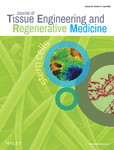A comparative evaluation of the effect of platelet rich fibrin matrix with and without peripheral blood mesenchymal stem cells on dental implant stability: A randomized controlled clinical trial
Abstract
Technological advances in the field of implantology have led to the concept of surface modifications to enhance implant stability by utilization of current concepts of tissue engineering and materials such as platelet concentrates and stem cells. The purpose of the present randomized controlled clinical trial was to evaluate and compare the effect of platelet rich fibrin matrix (PRFM) with and without peripheral blood mesenchymal stem cells (PBMSCs) on implant stability; by assessing the bone to implant contact (BIC) using resonance frequency analysis (RFA), insertion torque and also to establish and correlate the same with implant stability quotient (ISQ). A total of 15 patients with 30 sites ensuring a minimum of two dental implants adjacently placed in an edentulous area; with the age group of 25–50 years of both the sexes were categorized into Group 1 (dental implant with PRFM) and Group 2 (dental implant with PBMSCs embedded in PRFM). Insertion torque values at the time of dental implant placement and ISQ using RFA was recorded at 1 week, 1 month, and 3 months post operatively. There was no significant difference (p = 0.81) in Insertion torque values between both the groups (G1 and G2). Platelet rich fibrin matrix along with PBMSCs enhanced implant stability as higher and statistically significant ISQ values were noted at 1 week (p = 0.18), 1 month (p ≤ 0.001), and 3 months (p ≤ 0.001) intervals in the G2 group. Platelet rich fibrin matrix and PBMSCs showed promising results as a potential regenerative material for increasing and enhancing BIC and hence implant stability.
CONFLICT OF INTEREST
The authors have no conflict of interest to disclose.
Open Research
DATA AVAILABILITY STATEMENT
Research data are not shared.




